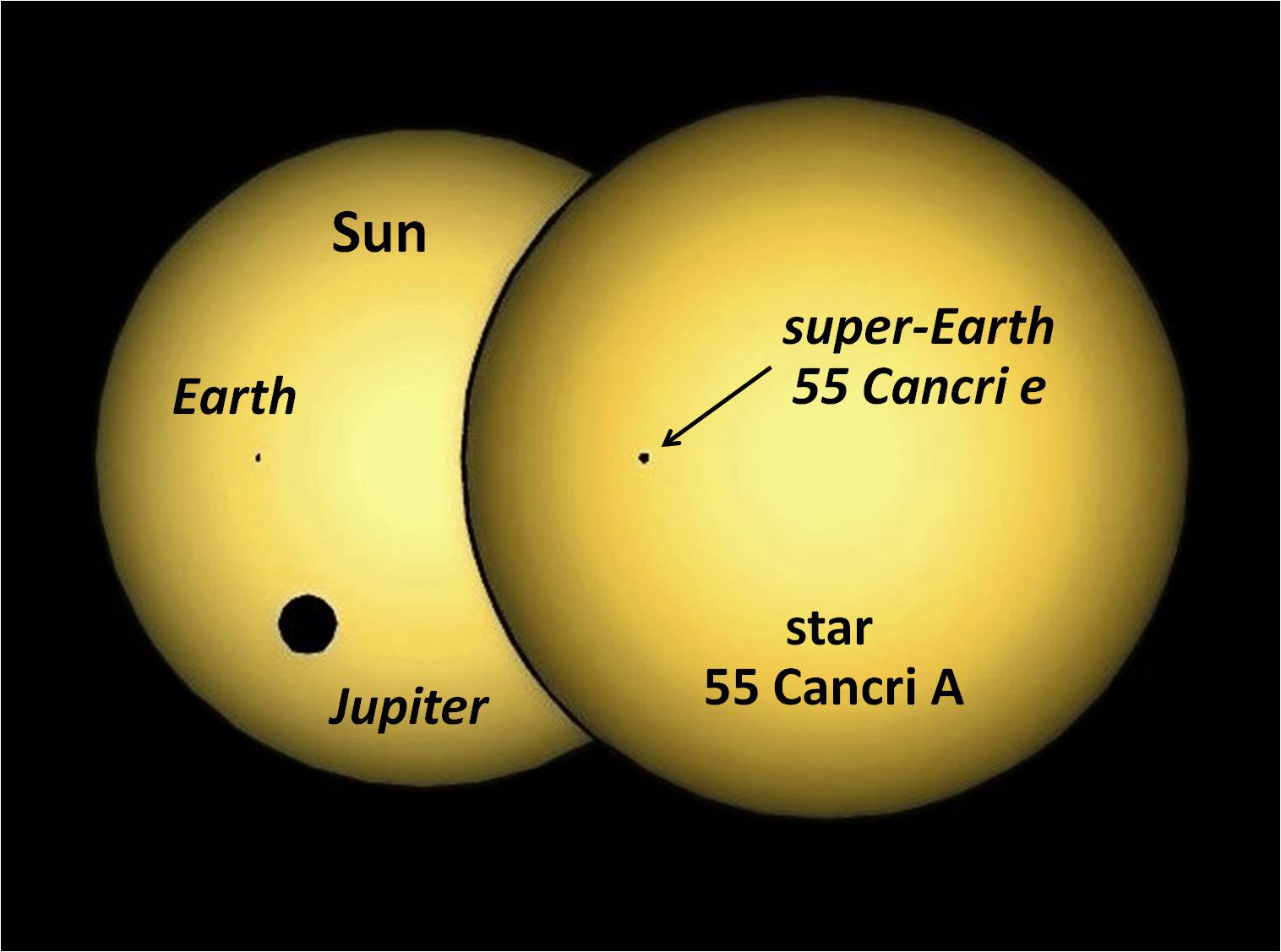An international team of astronomers revealed the details of a “super-exotic” exoplanet, the densest known rocky planet.
In the image below, you can see a simulation of the silhouette of this exoplanet, 55 Cancri e, passing in front of its parent star, compared to the Earth and Jupiter transiting our Sun, as seen from outside the Solar System. At first glance, everything looks almost the same. Actually apart from being rocky planets orbiting two stars that are very similar, our Earth and 55 Cancri e don’t have that much in common…

According to a team led by astronomers from the Massachusetts Institute of Technology (MIT), the University of British Columbia (UBC), the Harvard-Smithsonian Center for Astrophysics and the University of California at Santa Cruz (UCSC), the exoplanet is 60% larger and twice as dense as Earth. It is the densest solid planet known, almost as dense as lead.
The research, based on observations from Canada’s MOST (Microvariability & Oscillations of STars) space telescope, was released online at arXiv.org and has been submitted for publication in The Astrophysical Journal Letters.
55 Cancri e is approximately 40 light-years away from us, orbiting a star called 55 Cancri A. It is so close to its star that it takes only 18 hours for the exoplanet to complete an orbit.
“You could set dates on this world by your wrist watch, not a calendar,” says UBC astronomer Jaymie Matthews.
The planet’s surface is pretty hot, maybe as high as 2,700 degrees Celsius! With such a high temperature, the planet probably does not have any atmosphere. In other words, you can forget about finding life out there.
However, the planet is still extremely interesting. According to the lead author John Winn of MIT, many types of sensitive measurements are possible, thanks to the host star’s brightness; it could help test theories about planet formation, evolution and survival.
In case you are wondering where the planetary system is in our night sky, the star can be observed with the naked eye for the next two months. Of course, the planet itself is not visible, but it is quite fascinating to be able to look at a star, actually knowing that there are planets orbiting around it. Yes, planets. Indeed, 55 Cancri e is not alone, there are four more exoplanets in this system.
All of them were detected using the Doppler technique: the change in the wavelength of light coming from a star, due to the gravitational pull of the unseen planets, is measured over the course of days, months and years.
After Rebekah Dawson, an astronomy PhD student at Harvard and Daniel Fabrycky, a Hubble Fellow at UCSC, suggested that the orbital period of 55 Cancri e could be much shorter than others had assumed, MOST was used to detect subtle dips in the brightness of star 55 Cancri A as planet e passed in front of it during each orbit.
As predicted by Dawson and Fabrycky, the research team observed an orbital period of 17 hours and 41 minutes. The starlight is dimmed by only 0.02% during each transit, telling the astronomers the exoplanet is about 21,000 kilometers in diameter.
“On this world – the densest solid planet found anywhere so far, in the Solar System or beyond – you would weigh three times heavier than you do on Earth. By day, the sun would look 60 times bigger and shine 3,600 times brighter in the sky,” says Matthews, MOST Mission Scientist and second author on the paper.
Finally, if you are lucky enough to have a clear dark sky tonight, go out for a few minutes and try to spot 55 Cancri A. Isn’t that cool to know that around this tiny dot of light, there are five other planets?

